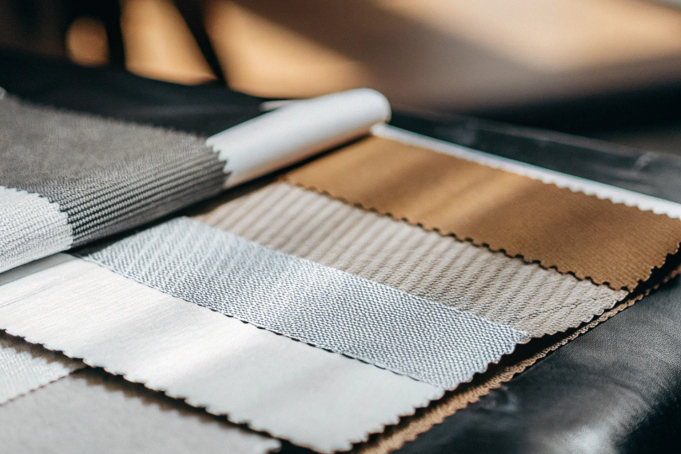Activewear has become a staple in modern wardrobes, designed to support athletic activities while offering comfort and style. But what exactly is activewear made of? The materials used play a crucial role in determining the functionality, durability, and overall comfort of the garments.
Most activewear is made of synthetic fabrics like polyester and nylon, often blended with spandex1 for added stretch. These materials are chosen for their moisture-wicking properties, durability, and ability to maintain shape during intense activities.
This article dives into the ideal fabrics for activewear, explores what makes athletic clothing comfortable, and discusses the innovations shaping the future of activewear materials.
What Is the Ideal Fabric for Activewear?
Choosing the right fabric for activewear is essential for enhancing performance and ensuring comfort during workouts.
The ideal fabric for activewear is one that is breathable, moisture-wicking, and durable, such as polyester, nylon, or blends that include spandex for stretchability.

1. Polyester
-
Why It’s Popular:
- Lightweight, durable, and has excellent moisture-wicking properties.
-
Performance Benefits:
- Resists shrinking and wrinkles, maintains shape after multiple washes, and dries quickly.
| Advantages of Polyester | Description |
|---|---|
| Moisture-Wicking | Keeps sweat away from the skin |
| Durability | Withstands wear and tear in intense use |
| Quick-Drying | Ideal for repeated washes and workouts |
2. Nylon
-
Why It’s Ideal:
- Strong, elastic, and silky in texture, providing comfort and resilience.
-
Key Features:
- Excellent abrasion resistance and strength retention when wet.
3. Spandex (Lycra)
-
Why It’s Used:
- Adds stretch and flexibility, allowing garments to move with the body.
-
Benefits:
- Ensures garments maintain their shape, enhancing comfort and fit.
| Fabric | Best For |
|---|---|
| Polyester | General activewear, moisture management |
| Nylon | High-intensity, comfort, and durability |
| Spandex | Stretch and flexibility |
What Is the Most Comfortable Material for Athletic Clothing?
Comfort is key, especially for long workouts or all-day wear.
Comfortable materials include bamboo, organic cotton2, and modal, offering softness, breathability, and eco-friendliness.

1. Bamboo
-
Why It’s Comfortable:
- Soft, moisture-wicking, naturally antibacterial.
-
Sustainability Factor:
- Bamboo is eco-friendly, making it a great sustainable option.
2. Organic Cotton
-
Why It’s Popular:
- Breathable and gentle on skin, perfect for low-intensity activities.
-
Limitations:
- Absorbs sweat, slower drying, less ideal for high-intensity workouts.
3. Modal
- Why It’s Comfortable:
- Silky smooth and breathable, often blended with spandex for stretch.
| Material | Comfort Features |
|---|---|
| Bamboo | Soft, antibacterial, wicking |
| Organic Cotton | Breathable, gentle on skin |
| Modal | Smooth, breathable texture |
Innovations in Activewear Fabrics
As technology advances, so do activewear materials, aiming to enhance performance and sustainability.
1. Sustainable Materials
-
- Made from plastic bottles, retains performance while reducing environmental impact.
-
Organic and Natural Fibers:
- Organic cotton, Tencel, and hemp are low-impact options.
| Sustainable Fabric | Feature |
|---|---|
| Recycled Polyester | Made from waste, eco-friendly choice |
| Tencel | Wood pulp-based, biodegradable |
2. Smart Fabrics
- Features:
- Temperature regulation to keep you cool or warm.
- Embedded sensors to track heart rate or muscle activity4.
3. Odor-Resistant Technologies
-
Antibacterial Treatments:
- Fabrics with silver ions prevent bacterial growth.
-
Natural Odor Control:
- Bamboo and merino wool are naturally odor-resistant.
| Innovation | Example |
|---|---|
| Smart Fabrics | Sensor-enabled gear, temperature control |
| Antibacterial Tech | Odor-free clothing for extended wear |

The Role of Fabric in Sustainability
Fabric choices greatly influence activewear’s environmental footprint.
1. Biodegradable Materials
- Natural Fibers:
- Organic cotton and hemp decompose naturally.
2. Circular Fashion
- Recyclable Fabrics:
- Designed for easy recycling, minimizing landfill waste.
3. Water-Efficient Processes
- Eco-Friendly Dyeing:
- Reduces water and chemical usage, lowering environmental impact.
| Practice | Environmental Impact |
|---|---|
| Biodegradable Fibers | Less landfill waste |
| Circular Fashion | Encourages recycling, reuse |
| Water-Efficient Dyeing | Minimizes resource use |
Conclusion
Activewear primarily consists of synthetic fabrics like polyester and nylon blended with spandex for performance and durability. For comfort seekers, bamboo, organic cotton, and modal provide softer, more eco-friendly alternatives. As innovations continue, sustainable and smart textiles reshape the market, proving that fabric choices influence both performance and environmental responsibility.
The right material enhances your active lifestyle, whether you’re hitting the gym, practicing yoga, or running errands—and sustainable options ensure that this performance comes without sacrificing our planet’s future.













